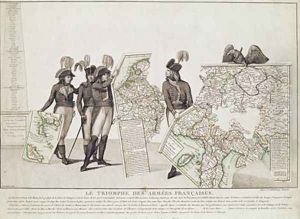Antoine Maxime Monsaldy Paintings
Antoine Maxime Monsaldy was a French artist born in 1754, during a period of great intellectual and artistic development known as the Age of Enlightenment. Although not as widely recognized as some of his contemporaries, Monsaldy's work is a representation of the artistic transitions of the time, particularly the shift from Rococo to Neoclassicism, which was gaining prominence towards the end of the 18th century.
Monsaldy primarily focused on genre scenes, portraits, and historical paintings. His style was influenced by the dominant artistic trends of his time, particularly Neoclassicism, which was characterized by a return to classical antiquity's simplicity, harmony, and proportion. The Neoclassical movement was a response to the perceived excesses of the Rococo style and was inspired by the discovery of ancient Herculaneum and Pompeii, as well as the Roman historian Winckelmann's writings on the nobility of classical art.
While not much is documented about Monsaldy's training, it is known that he became a member of the Academy of Saint Luke in Rome. This suggests that he spent some time in Italy, which was typical for artists of his time seeking to study classical art and architecture firsthand. His time in Italy likely had a significant impact on his artistic development and the evolution of his style.
Despite his involvement with the Academy of Saint Luke, Monsaldy's career did not rise to the same heights as some of his contemporaries. The art scene in France during this period was highly competitive, with artists vying for royal commissions and recognition from the French Academy. Monsaldy's works were exhibited at the Salon, the official art exhibition of the Académie des Beaux-Arts in Paris, which was the principal showcase for French painting and sculpture.
Antoine Maxime Monsaldy's death came in 1817, a period which saw the aftermath of the French Revolution and the rise of the Romantic movement, which would soon eclipse Neoclassicism. Although his name may not be as renowned as that of David or Ingres, his works remain a testament to the artistic currents of his time and provide valuable insights into the cultural and aesthetic shifts of the late 18th and early 19th centuries.
